Minecraft, a sandbox game developed by Mojang Studios and originally created by Markus "Notch" Persson, was first released as a public alpha in 2009 and fully launched in 2011. Post-launch, Jens "Jeb" Bergensten took over development. It has been ported to numerous platforms and was acquired by Microsoft in 2014 for $2.5 billion. The game allows players to build constructions out of textured cubes in a 3D procedurally generated world.
March 2009: Persson Leaves King and Joins jAlbum
Around March 2009, Markus Persson left King and joined jAlbum, while continuing to work on his game prototypes.
March 2009: Persson Leaves King
Before creating Minecraft, Markus "Notch" Persson was a game developer at King, where he worked until March 2009. At King, he primarily developed browser games and learned several programming languages.
April 2009: Inspiration from Infiniminer
In April 2009, Infiniminer, a block-based open-ended mining game, inspired Persson's vision for the future direction of RubyDung, a base-building game that would eventually become Minecraft.
May 2009: Development and Initial Test Video
Development began for Minecraft, then known as Cave Game, in May 2009. A test video of an early version was released on YouTube.
May 2009: First Public Alpha Build Release
In May 2009, the first public alpha build of Minecraft was released. Markus "Notch" Persson originally created the game using Java.
May 2009: First Public Release of Minecraft
In May 2009, the first public release of Minecraft occurred, with a developmental version shared on the TIGSource forums. Based on feedback from forum users, Persson continued updating the game.
June 2010: Alpha Release and Persson's Resignation
In June 2010, the first major update, known as Alpha, was released for Minecraft. Persson resigned from his day job at jAlbum to focus on Minecraft full-time.
July 2010: PC Gamer Lists Minecraft as Fourth-Best Game to Play at Work
In July 2010, PC Gamer listed Minecraft as the fourth-best game to play at work, recognizing its appeal and engagement.
December 2010: Minecraft Enters Beta Phase
In December 2010, Markus Persson announced that Minecraft would enter its beta phase on December 20. Bug fixes and pre-release updates would remain free.
2010: Emergence of Minecraft "Clones"
Following the surge in Minecraft's popularity, in 2010, numerous video games were criticized for similarities, labeled as "clones" due to inspiration or superficial likeness to Minecraft. Examples include Ace of Spades, CastleMiner, CraftWorld, FortressCraft, Terraria, BlockWorld 3D, Total Miner, and Luanti.
2010: Minecraft Videos Gain Influence on YouTube
In 2010, Minecraft-related videos began to gain influence on YouTube, often made by commentators who provided screen-capture footage and voice-overs.
2010: Further Development Phases
Throughout 2010, further developmental phases of Minecraft, dubbed Survival Test, Indev, and Infdev, were released.
March 2011: Minecraft Wins Grand Prize at Independent Games Festival
In March 2011, Minecraft won the Seumas McNally Grand Prize and the community-voted Audience Award at the Independent Games Festival, highlighting its innovation and popularity.
May 2011: Minecraft Selected for Smithsonian American Art Museum Exhibit
On 5 May 2011, Minecraft was selected as one of the 80 games to be displayed at the Smithsonian American Art Museum as part of The Art of Video Games exhibit, which opened on 16 March 2012.
October 2011: Mina Kvarter Initiative
In October 2011, the Mina Kvarter (My Block) initiative was started in Sweden. This initiative gave young people in Swedish communities a tool to visualize how they wanted to change their part of town. According to Manneh, the project was a helpful way to visualize urban planning ideas without necessarily having a training in architecture.
November 2011: Full Release of Minecraft
In November 2011, Minecraft received its full release. After the full release of Minecraft, Markus Persson left Mojang and gave Jens Bergensten control over development of the game.
November 2011: Full 1.0 Version Release
In November 2011, partly due to the game's rising popularity, Markus Persson decided to release a full 1.0 version of Minecraft, later known as the "Adventure Update". Shortly after, Persson stepped down from development, handing the project's lead to Jens "Jeb" Bergensten.
November 2011: First Minecon Held in Las Vegas
In November 2011, the first full Minecon was held at the Mandalay Bay Hotel and Casino in Las Vegas. The event included the official launch of Minecraft, keynote speeches, building and costume contests, Minecraft-themed breakout classes, exhibits, and more.
November 2011: Official Launch of Minecraft
On November 18, 2011, Minecraft officially exited beta and launched in full.
December 2011: Jens Bergensten Takes Creative Control
On December 1, 2011, Jens "Jeb" Bergensten took full creative control over Minecraft, replacing Markus Persson as lead designer.
2011: Minicraft Created for Ludum Dare Competition
In 2011, Markus Persson created Minicraft, a similar game, for the Ludum Dare competition. Minicraft was developed during the Ludum Dare competition.
2011: MinecraftEdu formed
In 2011, MinecraftEdu, an educational organization, was formed. The goal was to introduce Minecraft into schools. MinecraftEdu works with Mojang to make Minecraft affordable and accessible to schools.
2011: Yogscast Panel at Minecon 2011 Has Highest Attendance
In 2011, The Yogscast, a British company that regularly produces Minecraft videos, held a panel at Minecon 2011 that had the highest attendance, demonstrating their significant influence within the community.
2011: Minecraft Used to Redesign Public Buildings and Parks
In 2011, at Minecon, a Swedish developer proposed using Minecraft to redesign public buildings and parks. They argued that Minecraft's rendering was more user-friendly, facilitating community envisioning of new constructions. The developer stated that using Minecraft for rendering was much more user-friendly for the community, making it easier to envision the functionality of new buildings and parks.
February 2012: Mojang Hires Bukkit Developers
On February 28, 2012, Mojang announced the hiring of the developers behind Bukkit, a popular developer API for Minecraft servers, to improve Minecraft's support of server modifications.
March 2012: The Art of Video Games Exhibit Opens at the Smithsonian American Art Museum
On 16 March 2012, The Art of Video Games exhibit, featuring Minecraft, opened at the Smithsonian American Art Museum, recognizing the game's cultural impact.
May 2012: Over Four Million Minecraft-Related YouTube Videos Uploaded
By May 2012, over four million Minecraft-related YouTube videos had been uploaded, showcasing the game's strong presence and influence on the platform.
May 2012: Minecraft Debuts on Xbox Live Arcade
In May 2012, Minecraft debuted on Xbox Live Arcade, leading to significant sales. By December 2012, the game had sold over 4.48 million copies on the platform.
August 2012: Adventure Mode Added
In August 2012, Mojang added an adventure mode to Minecraft, which was created specially for custom maps in Java Edition.
September 2012: MinecraftEdu reaches 250,000 students
In September 2012, MinecraftEdu announced that approximately 250,000 students worldwide had access to Minecraft through the company. MinecraftEdu includes unique features to allow teachers to monitor the students' progress within the virtual world.
September 2012: Mojang and UN Habitat Launch Block by Block Project
In September 2012, Mojang partnered with UN Habitat to start the Block by Block project, aiming to recreate real-world environments in Minecraft. This initiative allows young people to design changes in their communities using Minecraft, helping reconstruct areas of concern. The community helps reconstruct the areas of concern, and citizens are invited to enter the Minecraft servers and modify their own neighborhood.
October 2012: Command Blocks Added
In October 2012, Mojang added "command blocks" to Minecraft, which were created specially for custom maps in Java Edition.
December 2012: Minecraft Sales Exceed 4.48 Million Copies on Xbox Live
In December 2012, GameSpot reported that Minecraft had sold over 4.48 million copies since its debut on Xbox Live Arcade in May 2012. At that time, Minecraft was the most purchased title on Xbox Live Arcade and the fourth most played title on Xbox Live based on average unique users per day.
2012: Minecraft as a CAD Program
In 2012, Cody Sumter from MIT Media Lab noted Minecraft's potential as a CAD program. He stated that Minecraft has tricked 40 million people into learning to use a CAD program. This was after software was developed to print virtual designs using 3D printers.
September 2013: First Mash-Up Pack for Xbox 360 Edition
On September 4, 2013, the first mash-up pack for the Xbox 360 Edition of Minecraft was released, themed after the Mass Effect franchise. This pack combined texture packs with skin packs and changes to the game's sounds, music, and user interface.
2013: Minecraft Nominated for Family Game of the Year at British Academy Video Games Awards
In 2013, Minecraft was nominated as the family game of the year at the British Academy Video Games Awards, underscoring its appeal to a wide audience.
2013: Minecraft Nominated for Favorite App at Kids' Choice Awards
In 2013, Minecraft was nominated for Favorite App at the Kids' Choice Awards but lost to Temple Run, demonstrating its popularity among younger audiences.
2013: Minecraft Realms Announcement
In 2013, Mojang announced Minecraft Realms, a server hosting service intended to enable players to easily and safely run server multiplayer games without needing to set up their own.
April 2014: Denmark recreated in Minecraft
In April 2014, the Danish Geodata Agency generated all of Denmark in fullscale in Minecraft based on their own geodata. This was possible because Denmark is one of the flattest countries. The limit in default Minecraft was around 192 meters above in-game sea level when the project was completed.
April 2014: Xbox 360 Version Sales Reach 12 Million Copies
As of April 2014, the Xbox 360 version of Minecraft had sold 12 million copies, marking a significant milestone for the game on that platform.
June 2014: Mojang Changes EULA to Prohibit Pay-to-Win Servers
In June 2014, Microsoft and Mojang announced changes to the Minecraft end-user license agreement (EULA) to prohibit servers from accepting donations or payments in exchange for in-game advantages, effectively banning "pay-to-win" servers. This decision led to community backlash and comparisons to restrictive practices by companies like Electronic Arts and Activision.
September 2014: British Museum to be Recreated in Minecraft
In September 2014, the British Museum in London announced plans to recreate its building and exhibits in Minecraft, involving the public. The public would help create the exhibits in Minecraft.
September 2014: Microsoft Announces Acquisition of Mojang
On September 15, 2014, Microsoft announced a $2.5 billion acquisition of Mojang, which included the Minecraft intellectual property.
November 2014: Microsoft Acquisition of Mojang Arbitrated
On November 6, 2014, the deal between Microsoft and Mojang was arbitrated, leading to Markus Persson becoming one of Forbes' "World's Billionaires".
2014: Microsoft Acquires Mojang and Minecraft
In 2014, Microsoft purchased Mojang and the Minecraft intellectual property for US$2.5 billion.
2014: Minecraft Nominated for Favorite Video Game at Kids' Choice Awards
In 2014, Minecraft was nominated for Favorite Video Game at the Kids' Choice Awards, but it lost to Just Dance 2014, showing its presence in the children's gaming sphere.
2014: Minecraft Second-Most Searched Term on YouTube
In 2014, Minecraft was the second-most searched term on the entire YouTube platform, highlighting its immense popularity and cultural relevance.
2014: Minecraft Console Edition Wins TIGA Game Of The Year
Minecraft Console Edition won the award for TIGA Game Of The Year in 2014, recognizing its quality and popularity on console platforms.
2014: Community Blames Mob Vote for Lack of Content Since Microsoft's Acquisition
The Mob Vote was blamed for a perceived lack of new content added to Minecraft since Microsoft's acquisition of Mojang in 2014.
January 2015: Minecraft Reaches 500,000 Digital Copies Sold in Japan on PlayStation Platforms
By January 2015, Minecraft had sold 500,000 digital copies in Japan across all PlayStation platforms. Primary school children were a significant portion of the purchasers, particularly of the PS Vita version.
2015: Minecraft Placed 6th on USgamer's The 15 Best Games Since 2000 List
In 2015, Minecraft was ranked 6th on USgamer's list of The 15 Best Games Since 2000, highlighting its enduring impact and quality.
2015: Minecraft Wins Most Addicting Game at Kids' Choice Awards
In 2015, Minecraft won the award for the Most Addicting Game at the Kids' Choice Awards, highlighting its engaging gameplay for younger players.
May 2016: Super Mario Mash-Up Pack Released for Wii U Edition
On May 17, 2016, a cross-promotional resource pack based on the Super Mario franchise by Nintendo was released exclusively for the Wii U Edition of Minecraft worldwide.
June 2016: Cross-Platform Play Added to Realms
In June 2016, support for cross-platform play between Windows 10, iOS, and Android platforms was added to Minecraft through Realms.
2016: Last In-Person Minecon Event
In 2016, Minecon was held in-person for the last time. Following 2016, the event transitioned to annual livestreams on minecraft.net and YouTube.
2016: Minecraft Placed 6th on Time's The 50 Best Video Games of All Time List
In 2016, Minecraft was placed 6th on Time's list of The 50 Best Video Games of All Time, solidifying its legacy as one of the most important games ever created.
2016: Block by Block Project to Upgrade Public Spaces
In 2016, Mojang's Block by Block project, in partnership with UN-Habitat's Sustainable Urban Development Network, aimed to upgrade 300 public spaces. This three-year partnership used Minecraft to facilitate the design and planning of these upgrades.
April 2017: Fallout Resource Pack Released for Windows and Mobile
In April 2017, a resource pack based on Fallout was released for Minecraft on Windows and Mobile.
June 2017: Discovery Update Released to Bedrock Version
In June 2017, Mojang released the Discovery Update to the Bedrock version of Minecraft. This update included a new map, a new game mode, and the Marketplace, a catalogue of user-generated content.
July 2017: Beta Version of Cross-Platform Play Update Released
On July 31, 2017, Mojang released the beta version of the update allowing cross-platform play in Minecraft.
2017: First Mob Vote Held During MINECON Earth 2017
The first "Mob Vote" was held during MINECON Earth 2017, where the Minecraft community voted between three original mob concepts to be implemented in a future update.
March 2018: Microsoft and Code.org Teach Programming with Minecraft
By March 2018, Microsoft and Code.org reported that over 85 million children had used their Minecraft-based tutorials to learn programming. Microsoft and the non-profit organisation Code.org had teamed up to offer Minecraft-based games, puzzles, and tutorials aimed to help teach children how to program.
April 2018: Malware Discovered in User-Made Skins
In April 2018, malware was discovered in several downloadable user-made Minecraft skins for use with the Java Edition of the game. This malware affected nearly 50,000 accounts and attempted to reformat the user's hard drive when activated. Mojang promptly patched the issue.
July 2018: Nintendo Switch Support for Realms Released
In July 2018, Nintendo Switch support for Realms was released in Minecraft.
2018: Minecraft YouTube's Biggest Game Globally
By 2018, Minecraft was still YouTube's biggest game globally, maintaining its dominant position in the gaming content landscape.
2018: Java Edition Nominated for Favorite Video Game at Kids' Choice Awards
In 2018, the Java Edition of Minecraft was nominated for "Favorite Video Game" at the Kids' Choice Awards, showcasing its continued relevance among young gamers.
September 2019: Minecraft Reaches 112 Million Monthly Active Players
By September 2019, Minecraft, including all of its versions, had over 112 million monthly active players, showcasing its continued popularity.
September 2019: The Guardian Classifies Minecraft as Best Video Game of 21st Century
In September 2019, The Guardian classified Minecraft as the best video game of the 21st century to date, highlighting its significant cultural impact.
November 2019: Polygon Calls Minecraft Most Important Game of the Decade
In November 2019, Polygon called Minecraft the "most important game of the decade" in its 2010s "decade in review", recognizing its profound influence on the gaming landscape.
December 2019: Forbes Gives Special Mention to Minecraft as One of the Best Games of the 2010s
In December 2019, Forbes gave Minecraft a special mention in a list of the best video games of the 2010s, stating that it is "without a doubt one of the most important games of the last ten years."
2019: Minecraft Wins Still Playing Award at Golden Joystick Awards
In 2019, Minecraft won the "Still Playing" award at the Golden Joystick Awards, recognizing its enduring popularity and continued player engagement.
2019: Minecraft Experiences Uptick in Popularity on YouTube
In 2019, thanks in part to PewDiePie's playthroughs of the game, Minecraft experienced a visible uptick in popularity on the YouTube platform, regaining prominence.
April 2020: Minecraft RTX Bedrock Edition Beta Release
On April 16, 2020, Nvidia released a Bedrock Edition-exclusive beta version of Minecraft called Minecraft RTX, introducing physically-based rendering, real-time path tracing, and DLSS for RTX-enabled GPUs.
May 2020: Minecraft Surpasses 200 Million Copies Sold
On its 11th anniversary in May 2020, Minecraft announced that it had reached over 200 million copies sold across all platforms, with over 126 million monthly active players.
June 2020: Minecraft Inducted into World Video Game Hall of Fame
In June 2020, Minecraft was inducted into the World Video Game Hall of Fame, solidifying its status as a landmark title in video game history.
December 2020: Public Release of Minecraft RTX
On December 8, 2020, the public release of Minecraft RTX was made available. Path tracing can only be enabled in supported worlds, which can be downloaded for free via the in-game Minecraft Marketplace.
2020: Minecraft Wins Favorite Video Game at Kids' Choice Awards
In 2020, Minecraft won the "Favorite Video Game" award at the Kids' Choice Awards, solidifying its popularity among younger audiences.
2020: Mojang Announces Mandatory Migration to Microsoft Accounts for Java Edition
In 2020, Mojang Studios announced that it would begin requiring Microsoft accounts to log into the Java Edition of the game, with older Mojang Studios accounts being sunsetted. The move to Microsoft accounts also required Java Edition players to create Xbox network Gamertags, leading to intense backlash from the community due to technical issues and the mandatory nature of the migration.
2020: Mob Vote Becomes Annual Event with Minecraft Live 2020
Starting with Minecraft Live 2020, the Mob Vote became an annual event, though it continued to receive criticism for causing divisions within the community.
April 2021: Minecraft Climbs to 140 Million Monthly Active Users
By April 2021, the number of active monthly users of Minecraft had climbed to 140 million, marking further growth in its player base.
December 2021: Minecraft Views Exceed One Trillion on YouTube
On 14 December 2021, YouTube announced that the total amount of Minecraft-related views on the website had exceeded one trillion, marking a significant milestone for the game's online presence.
2021: Minecraft Nominated for Favorite Video Game at Kids' Choice Awards
In 2021, Minecraft was nominated for the Nickelodeon Kids' Choice Award for Favorite Video Game, marking its continued relevance among young gamers.
March 2022: Microsoft Requires Account Migration for Java Edition
As of 10 March 2022, Microsoft required all players to migrate to Microsoft accounts in order to access the Java Edition of Minecraft. This move was met with community backlash due to technical difficulties and mandatory account migration.
June 2022: Microsoft and Mojang Announce Player Reporting Feature for Java Edition
In June 2022, Microsoft and Mojang Studios announced that they would be releasing a player reporting feature in all future builds of Java Edition. This feature allows players to report others on multiplayer servers for violating the Xbox Live Code of Conduct.
July 2022: Update 1.19.1 Released with Player Reporting Feature
On 27 July 2022, the update containing the player reporting feature (1.19.1) was released for the Java Edition of Minecraft, allowing players to report others for violations of the Xbox Community Standards, potentially leading to bans from all servers.
2022: Minecraft Wins Stream Game of the Year at Streamer Awards
In 2022, Minecraft won "Stream Game of the Year" at the inaugural Streamer Awards, acknowledging its strong presence and popularity on streaming platforms.
2022: Vita Version Becomes Best-Selling Vita Game in Japan
In 2022, the PlayStation Vita version of Minecraft had sold over 1.65 million physical copies in Japan, making it the best-selling Vita game in the country.
September 2023: Legacy Mojang Accounts Become Inaccessible
A deadline of 19 September 2023 was announced to complete account migration, after which all legacy Mojang accounts became inaccessible and unable to be migrated.
2023: Minecraft Wins Favorite Video Game at Kids' Choice Awards
In 2023, Minecraft won the Nickelodeon Kids' Choice Award for Favorite Video Game, marking another win in the same category from 2022.
2023: 2023 Mob Vote Boycotted Over Mob Implementation Concerns
The 2023 Mob Vote featured the crab, penguin, and armadillo. A Change.org petition demanded that Mojang implement all three mobs. The petition received about 445,000 signatures by October 13. Mojang proceeded normally, with the armadillo winning the vote.
September 2024: Mojang Announces Retirement of Mob Vote
In September 2024, Mojang announced that the Mob Vote would be retired as part of their future plans for Minecraft's development, responding to community criticism and concerns.
November 2024: Release of Oasis, an AI-Generated Version of Minecraft
In November 2024, artificial intelligence companies Decart and Etched released Oasis, an artificially generated version of Minecraft, as a proof of concept. Every in-game element is completely AI generated in real time and the model does not store world data, leading to "hallucinations".
2024: Minecraft Sales and Player Base in 2024
As of 2024, Minecraft is the best-selling video game of all time, with over 300 million copies sold and nearly 170 million monthly active players.
2024: Shift in Update Strategy
In late 2024, Mojang announced a shift in their Minecraft update strategy, opting for more frequent releases of smaller, incremental updates rather than large annual updates.
April 2025: Scheduled Theatrical Release of A Minecraft Movie
A live action film adaptation based on the game, titled A Minecraft Movie, is scheduled for a theatrical release in April 2025.
2025: Persson Announces Minecraft 2 Consideration
In 2025, Markus Persson announced through a poll on his X account that he was considering developing a spiritual successor to Minecraft, clarifying that he was "100% serious" and had "basically announced Minecraft 2".
Mentioned in this timeline
PlayStation is a video game brand by Sony Interactive Entertainment...
Xbox is a video gaming brand owned by Microsoft Gaming...
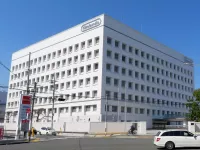
Nintendo is a Japanese multinational video game company based in...
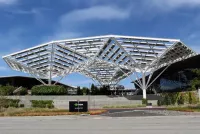
Nvidia is a technology company based in Santa Clara California...
Facebook is a social media and networking service created in...
The Nintendo Switch is a video game console developed by...
Trending
8 months ago Barcelona and Real Madrid to Clash in Copa del Rey Final El Clasico.
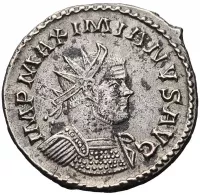
5 months ago Student Loan Repayment Troubles: 460K Denied, Backlog Alarms, Forgiveness Halted.
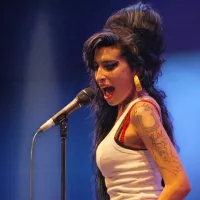
Amy Winehouse - was a highly acclaimed English singer and songwriter celebrated for her distinctive contralto voice and genre-bending music...
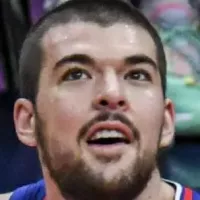
8 months ago Dyson Daniels Wins 2024-25 NBA Most Improved Player; Zubac, Cunningham Runners-Up
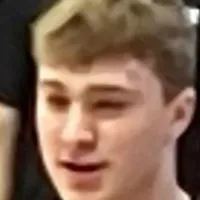
7 months ago Cooper Flagg buzzes at NBA Draft Combine, projected first pick alongside Dylan Harper.
1 month ago Mega Millions and Pick 3: Lottery Results and Winning Numbers Updates
Popular

Candace Owens is an American conservative political commentator and author...

Ilhan Omar is an American politician currently serving as the...

XXXTentacion born Jahseh Dwayne Ricardo Onfroy was a controversial yet...
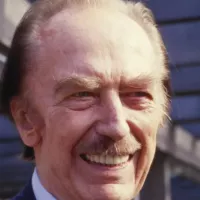
Frederick Christ Trump Sr - was an American real estate...
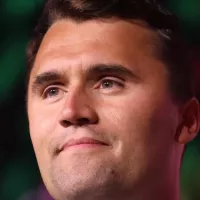
Charles James Charlie Kirk was a prominent American right-wing political...

Cristiano Ronaldo often nicknamed CR is a Portuguese professional footballer...


